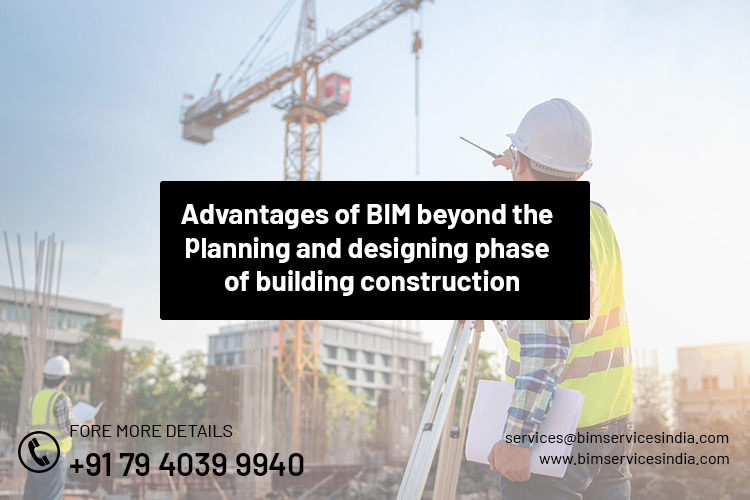Advantages of BIM beyond the planning and designing phase of building construction

The intelligent 3D model based process has been a catalyst for transformation in the construction sector. It provides the AEC professionals all the tools they need to streamline workflows, increase productivity, gain better financial savings etc. Though BIM is majorly associated with design and preconstruction stage it has all the tools that could benefit the building during its entire lifecycle. However, a lot of companies are not yet making the best out of BIM and are choosing to only use it for planning and designing of the building. In the current article we state the benefits of BIM during onsite construction as well as during management, restoration and even demolition of the building.
On-site Construction:
First and foremost, using BIM in planning and designing ensures that there is a smooth transition into the onsite construction process. Increased accuracy and precision ensure that there are no errors, waste of resources, accidents etc. The data rich 3D model has all the information regarding every aspect of construction which includes quantity-take offs, cost and scheduling. 4D BIM can be used to link the components or assemblies with time or schedule related information which includes lead time, how long it would take to construct or assemble, the sequence of installation etc. All the data can also be used to create simulations and visualize how the project will develop. Clash Detection Services can also be used to detect workflow clash for instance assembly of MEP components is scheduled before their delivery. Scheduling information can be extremely crucial as it can save valuable time which could be lost due to inefficient management onsite.
Table of Contents
5D BIM links components to quantities and cost. It considers the capital cost i.e. cost of purchasing and installing a component, cost of running and maintaining it and even its renewal. Since the cost is associated with quantities any change in quantities means that it will automatically be reflected in project cost. The benefit 5D BIM is that it allows to effectively keep track of budget and ensure that there are no drastic cost related surprises.
BIM can also be used along with one other modern technology like drones, robotics etc. to augment onsite productivity and safety. Drones can be used for supervision where data collected by them can be automatically inserted to the BIM model for tracking the construction process. Robots can also be used for manual and repeated tasks like brick laying, masonry etc.
Facility Management and Reconstruction:
Once the building has been constructed the 3D laser scanners can be used to get as-built data and update the BIM models to reflect all the changes that were made during the construction process. These BIM models can then be used to manage operations and maintenance of the buildings throughout its lifecycle. These virtual 3D models have all the information about the building components like their asset codes, serial numbers, manufacturer’s information etc. This could allow the building managers to keep track of the maintenance, ensure the components are being updated or keep track of new technology that could prove more beneficial. MEP BIM also provides the exact location of hidden MEP components like valves, ducts, pipes etc. so that incase of any malfunction repairs can be made quickly. BIM also allows to keep track of energy consumption and allows managers to enforce sustainability.
Scan to BIM Services can also be used when the building needs to be restored, refurbished or any extension process needs to be carried out. By knowing the exact building conditions the architects, engineers and designers can better design and mange onsite construction. It allows them to know which materials, components need to be replaced and which can be reused. Moreover, using BIM for reconstruction provides the other benefits like enhanced coordination, clash detection, collaboration between all stakeholders etc.
Demolition:
Sometimes it is more economical and practical to demolish the building than it is to reconstructed it. As stated above firstly Scan to BIM can be used to gain the current building condition following which the building’s structural integrity, the condition of its components, floors, walls etc. can be determined. Cost analysis can be conducted to know whether renovating the building would be more cost-effective. Then once the decision is made BIM can also be useful in the demolition process. It can run simulations to determine the best possible method in which demolition can take place. BIM also allows to extract material and volume information and can predict the amount of waste that would be generated. It can thus help in planning waste control strategies post demolition.
Conclusion:
In conclusion the advantages of BIM can extend beyond the planning and designing stage. By using BIM throughout the building’s lifecycle the construction companies can increase the buildings functioning.